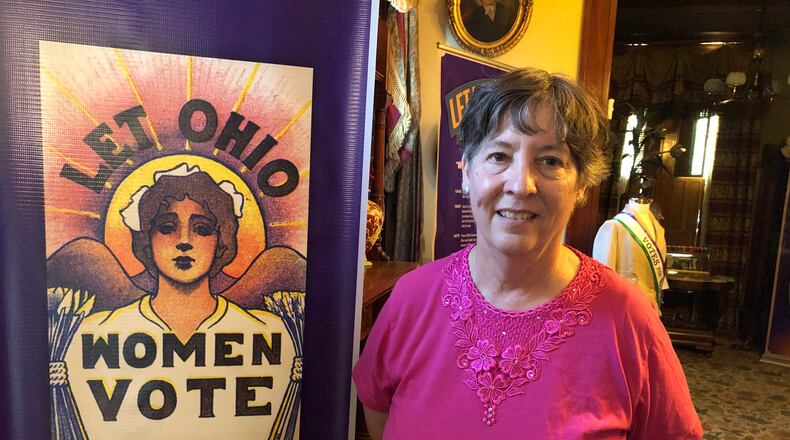Women today vote at a consistently higher rate than men. In the 2018 midterms, 55 percent of eligible women turned out to vote, compared with 51.8% of men, according to a Pew Research Center analysis of data from the U.S. Census Bureau. Women hold four of the seven seats on the Ohio Supreme Court, and Maureen O’Connor has been chief justice since 2011.
But by many benchmarks, women trail. Women comprise 29 percent of elected officeholders in Ohio, across all levels of government. Ohio has not elected a woman as United States senator, governor, nor state senate president. In Montgomery County, women hold 106 of 413 local and statewide offices, including judges, mayors, school boards, community offices and state senate, according to League of Women Voter statistics.
“Considering the 72-year struggle from Seneca Falls to the 19th Amendment in 1920, I believe our Dayton suffragists would be happy,” said Susan Hesselgesser, executive director of the League of Women Voters (LWV) of the Greater Dayton area. “I am sure it was beyond their imagination to think, 100 years later, that a woman could be nominated for the presidency and vice presidency of our country. The suffragists were feisty yet practical ladies, and I think they would be well pleased.”
The Butler County Historical Society is working to preserve that history. An exhibit that tells about women winning the right to vote opened there on July 31.
The historical society in February asked Butler County people to donate family photos and other information about local efforts to win voting rights. At first, information about local efforts for women’s suffrage were scarce. But then volunteers, led by Mary Royer, Sara Butler, Rich Piland and Sam Ashworth began looking through local newspapers from the 1910s through 1920 and found a trove of information.
They found such a bounty that they have put together a booklet that soon will be sold, telling local stories, including about a 95-year-old woman who registered to go to the polls and was thrilled about the opportunity.
As it turn—ed out, “a lot went on” locally, Butler said.
The exhibit will be at the historical society, 327 N. Second St., in Hamilton, from 5-9 p.m. Friday, and after that by appointment. To make appointments, call 513-896-9930.
While honoring that history, local officials continue to gauge what progress has been made for women in the region.
Premier Health President and CEO Mary Boosalis, the head of the region’s largest hospital system which employs 13,000 people, said there is reason for pride but that area suffragists might be disappointed that women haven’t achieved fuller equality in government and business. “I am glad we are progressing,” she said. “But when you look at the aggregate data for women in 2020, we still have a good way to go.”
Women lag behind economically, earning less than men and suffering higher poverty rates, in the area and throughout the country. Ohio women earn an average hourly wage of $16.15 compared with $19.29 for men.
“Women are more likely to be in precarious jobs, more likely to be in jobs that are poverty-level wages, and less likely to have job safety in times of crisis,” said Hannah Halbert, executive director of Policy Matters Ohio. “During the pandemic, women are really feeling the squeeze. They are often still expected to bear the brunt of child care at home at a time when child care is not accessible. And they are over-represented in fields such as retail and food service where people are being laid off.”
Boosalis has found southwest Ohio to be a supportive community for women ever since she accepted a post-graduate fellowship at Miami Valley Hospital in 1985. She passed on another fellowship when an interviewer called her “a little lady.”
Yet Boosalis sometimes still finds herself the only woman in the boardroom.
“From a business perspective, it’s important to reflect the communities you serve,” she said. “Whatever your business, you will have a better product with a diverse workforce. And my other general principle is that excellence is hard to find. Why would you exclude half the opportunities for finding it?”
About the Author

